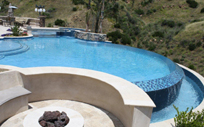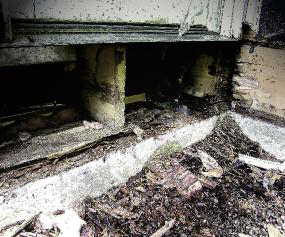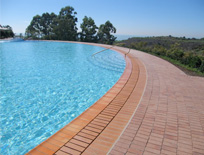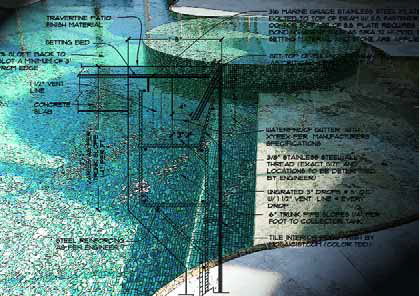waterproofing
Vanishing-edge pools (or infinity pools, as some call them) have become a fixture in the world of pool and spa design. Once considered exotic and highly unusual, you find them now in
I’ve come to the world of watershaping from a different perspective. Back in the 1960s, I worked for a company that built poured-in-place concrete homes in Florida. Right from the beginning, I couldn’t help noticing the importance of waterproofing in the performance of these structures – or the consequences of not taking the potential for water intrusion seriously. My interest in this subject took on new significance in 1989, when I formed a Florida firm that conducted forensic analyses in all manner of structural failures as a service to
Marine and zoological exhibits have always presented watershapers with a variety of specific technical challenges, not the least of which is devising a waterproofing system that will keep these vessels watertight, the viewing areas dry and the animal life safe. Here, Michael Mudrick and Elena Danke of Aquafin discuss a variety of lessons to be learned in pursuing these projects – and how they apply to other watershapes as well. Designing, engineering and installing watershapes for zoological and aquarium applications is never a casual exercise, especially when it comes to waterproofing. Not only do you have to find a product or combination of products that can accommodate various structural penetrations, adhere to all of the materials being used and, quite often, conform to irregularly shaped surfaces: Whatever material or system you select must also
There’s no denying the difficulty of building a high-quality inground pool, but the welcome fact is that the earth can conceal a range of little imperfections, from small leaks to minor structural defects. When you build a pool or some other watershape above grade as an integral component of a multi-story building, however, everything you do is magnified because the work is always exposed. Essentially, you lose the margin for error that might be possible with an inground installation. This past spring, work was completed on two high-rise watershapes our firm engineered as part of L.A. Live, a multi-purpose, entertainment-oriented complex situated near the Staples Center and the Los Angeles Convention Center in downtown Los Angeles. The pool/spa combinations were placed on the fourth and twenty-sixth floors, and although they have simple rectangular forms, they represent the absolute
It's a fact: Watershapes built with concrete need to be waterproofed in some way or it is almost certain that the water their shells are supposed to contain will find a way to escape. While some observe that concrete applied by an expert at high levels of compressive strength will
From its very first issue, this magazine has made one key point over and over again: Soil conditions determine the way a watershape’s shell is constructed; to achieve success in construction, the approach must be established by a competent engineer and followed on site. Through the years, numerous contributors to the magazine have described the process of placing watershapes on hillsides or dealing with soil conditions that lead to differential settlement. So far, however, relatively little attention has been paid to the challenges of working in locations where
Growing as a designer is often a matter of seeing things from fresh perspectives. As one with roots in the pool industry, for example, I once thought first about water and about plants and softscape later (if at all). That bias isn't uncommon, of course: I know plenty of landscape architects and designers who think about plants first and only later consider water. It all has to do with our
It’s true for any watershaper: No matter how varied the work you do, it never hurts to be known for the ability to do something special – and for doing it exceptionally well. Through the years, for example, my firm has polished its ability to provide our clients with watershapes reflecting a wide variety of tastes, styles and features, but to an extent that sometimes surprises even me, we’re known among prospective clients for






















